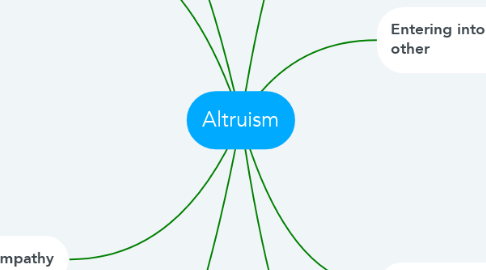Altruism
by Mikayla Parsons

1. Convergent and Divergent Resonances
1.1. Convergent: identical feelings
1.2. Divergent: distancing of feelings
2. Sympathy and Empathy
2.1. ability to feel what the other is feeling
2.2. Empathy/putting oneself in the other's place
3. Various forms of empathy
3.1. Knowing another person's internal state
3.2. motor and neural mimicry
3.3. emotional resonance
3.4. intuiting or projecting oneself into another's situation
3.5. imagining how another is thinking and feeling
3.6. imagining how one would think and feel in the other's place
3.7. empathic distress
3.8. empathic concern
4. The point of view of the neurosciences
4.1. Emotional contagion
4.2. Empathy
4.3. Compassion
5. What is empathy?
5.1. "feel the other from within"
5.2. set off by affect perception of feeling or imagination of experience
5.3. Affective empathy then occurs when we enter into resonance
6. Entering into resonance with the other
6.1. Required by affective empathy
6.2. Occurs in two stages: recognizing how the other feels, and then enter into resonance
6.3. Darwin and slavery
7. Pity and compassion
7.1. Pity is egocentric and selfish
7.2. Compassion is the opposite, the ultimate concern for the other's feelings
7.3. Compassion = altruistic motivation to intervene in favor of someone who is suffering or in need
8. Benefits of empathy
8.1. offers a more direct and precise path to predict another's behavior
8.2. allows us to acquire useful knowledge about our environment and allows us to communicate with the other


